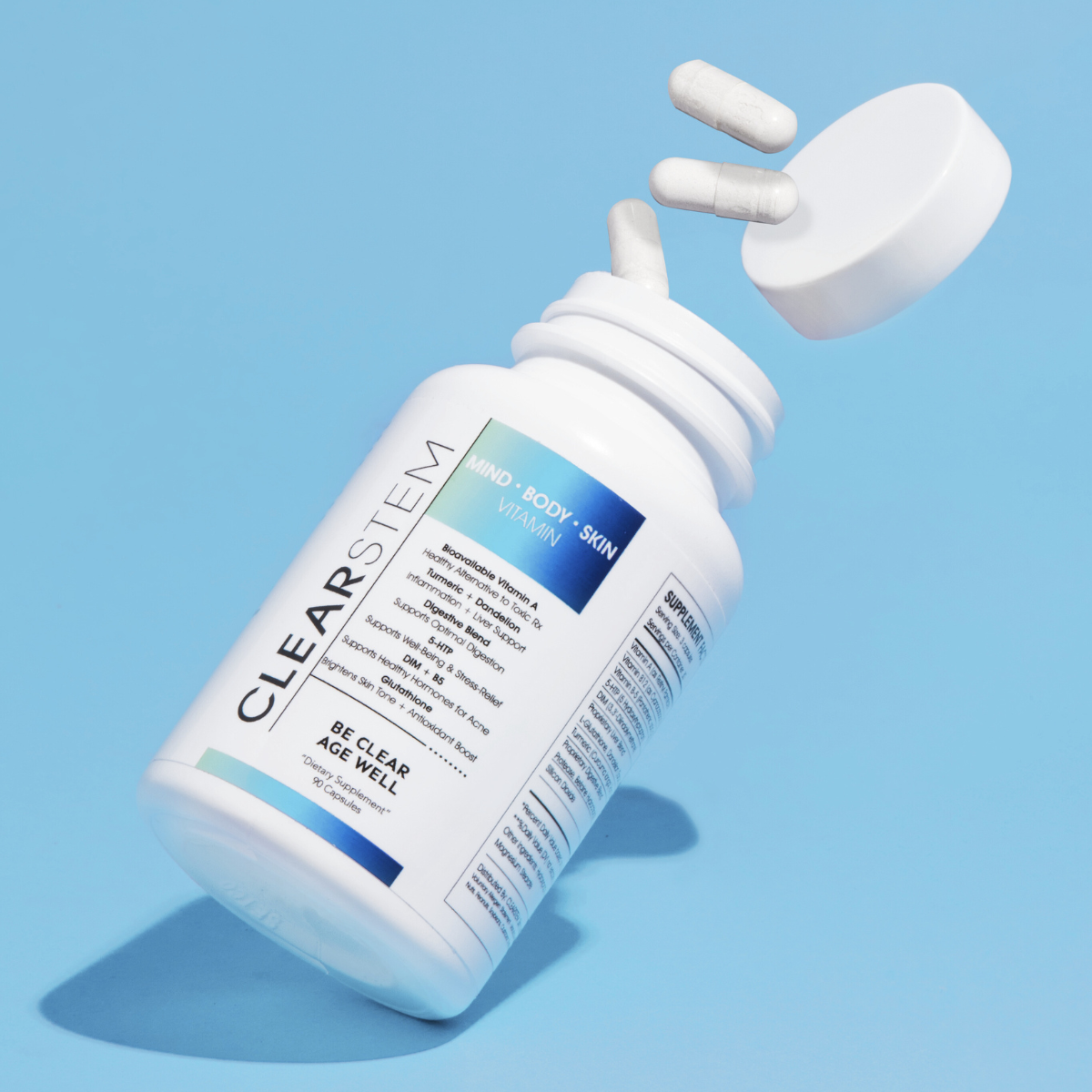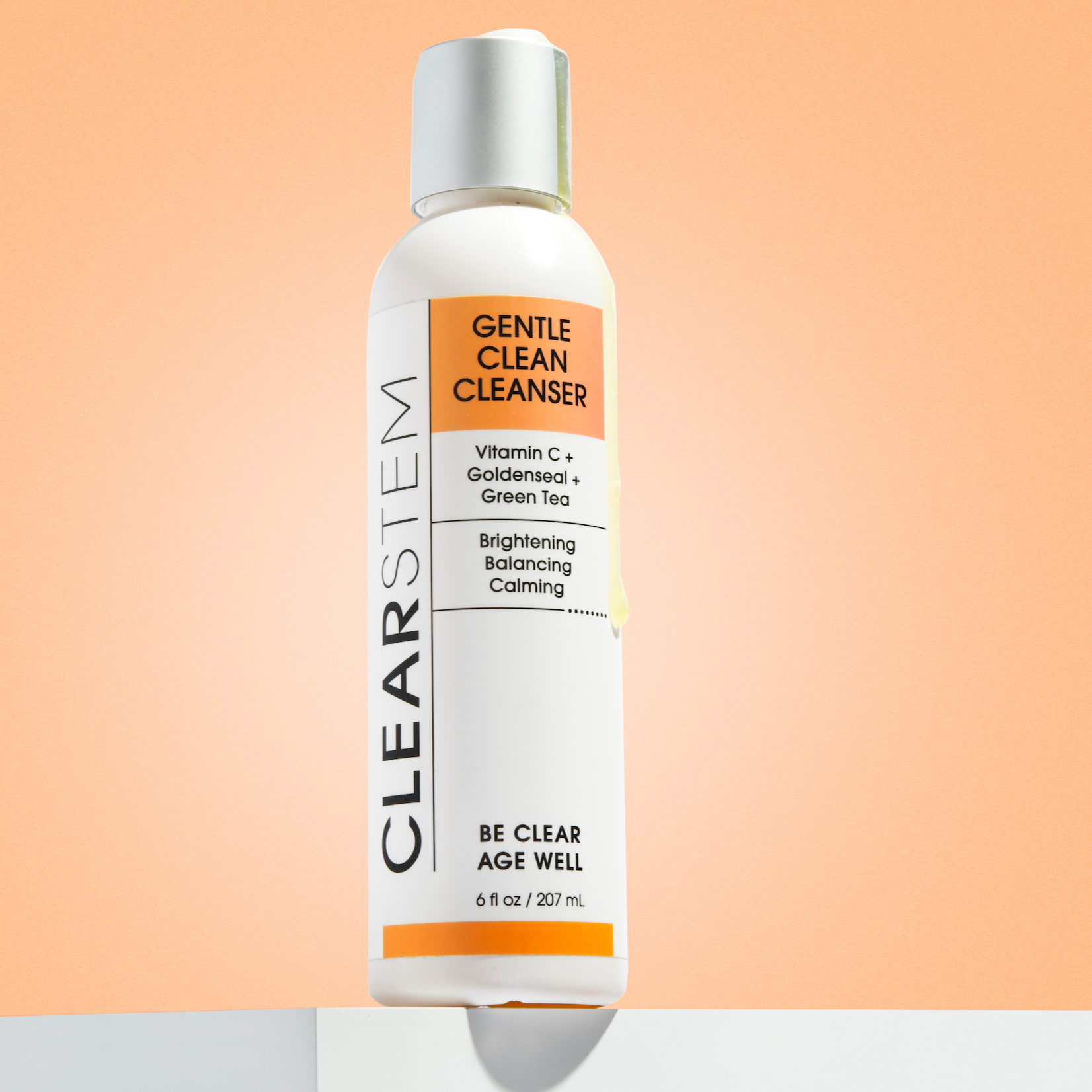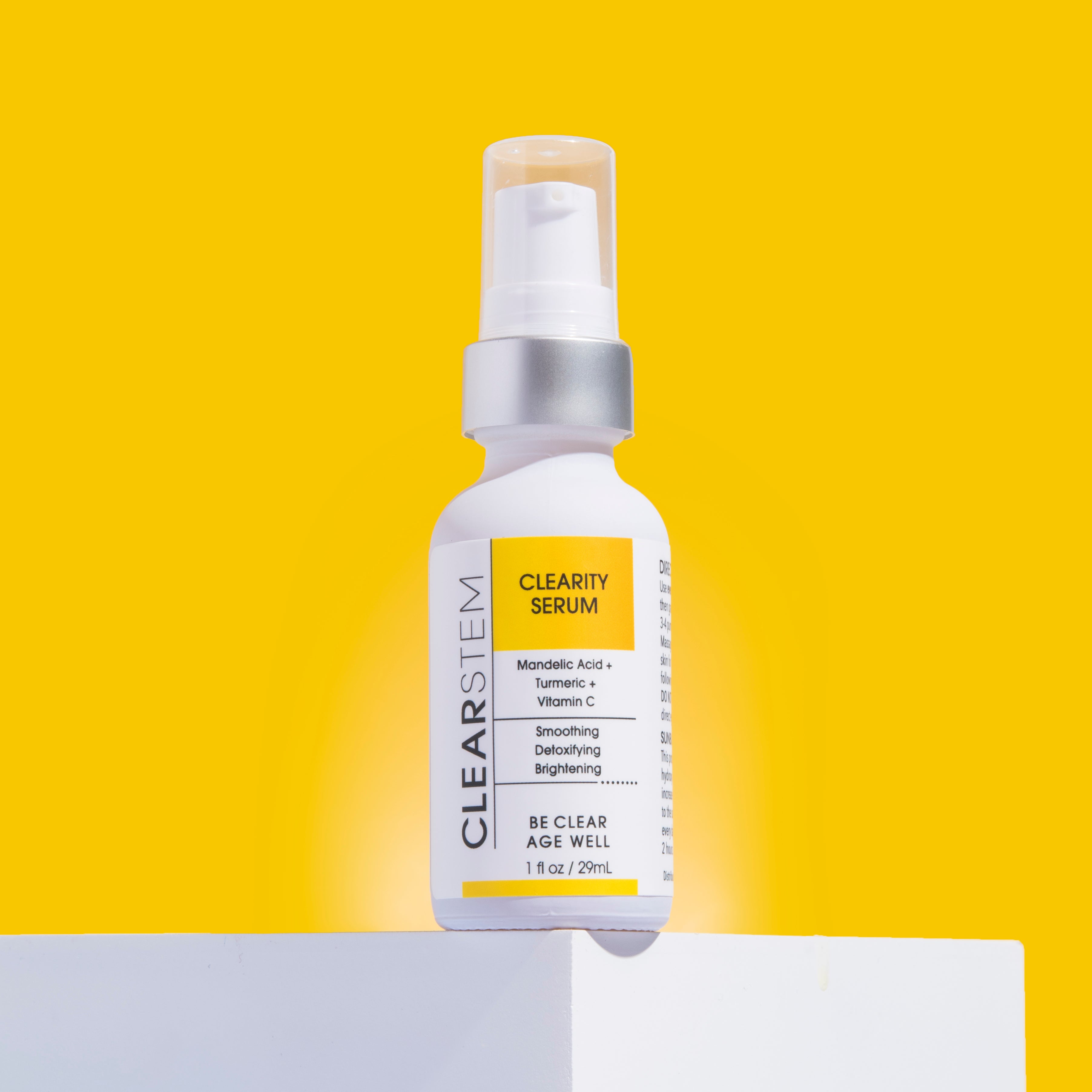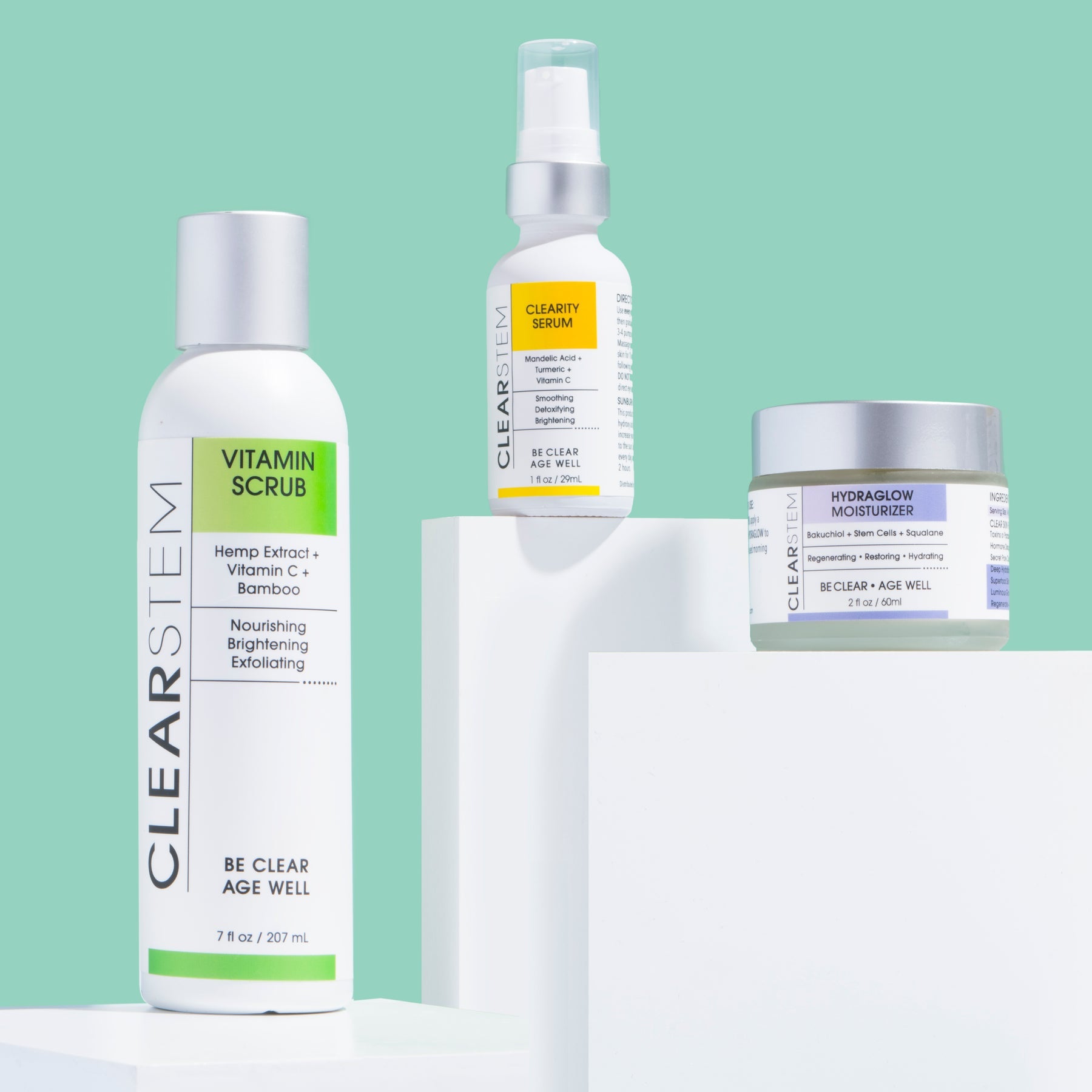You know that sunscreen is as much a part of summer fun as cold drinks, sunglasses, and a great beach read. But once you hit the sunscreen aisle, you might be overwhelmed by all the terminology—mineral, physical, full-spectrum, UVA, UVB… You just want the best non-pore-clogging sunscreen for your skin, without getting a PhD in chemistry.
So, what’s the magic number for SPF? When it comes to SPF 30 vs. 50, how do you choose?
There are many factors to consider, such as your skin type, how long you spend in the sun, and even the time of day. In this article, we’ll answer all your burning questions about sun protection, from how often to apply to the differences between mineral and chemical sunblocks, so that you can choose the right SPF for your needs.
How Does SPF Work?
Before you can understand how to choose the right SPF for you, you need to know a few basics about what SPF is and how it works. SPF stands for sun protection factor. It’s a way of measuring the skin’s protection against the sun’s ultraviolet (UV) radiation.
As you probably know, UV radiation can cause:
- Sunburn
- Skin damage
- Discoloration
- Uneven texture
- Signs of aging, such as wrinkling and sagging
- Skin cancer
The best way to prevent these consequences of UV exposure is by using a good-quality sunscreen every day and applying it properly.
How Does Sunscreen Protect Against Damage?
Broadly speaking, there are two categories of sunscreen: Mineral (sometimes called physical) and chemical. Both kinds protect the skin from UV radiation, when it comes down to mineral vs. chemical sunscreen, there are some differences.
What Do SPF Numbers Mean?
SPF refers to how much UV radiation it would take to damage your skin when using sunscreen, versus how much UV radiation it would take to damage your skin without any sunscreen.2 So, for example:
- SPF 30 means it takes 30 times more UV energy to burn your skin than if you weren’t wearing sunscreen
- SPF 50 means it takes 50 times more UV energy to burn your skin than if you weren’t using sunscreen
But take note: SPF doesn’t mean how many minutes of UV radiation your skin can take without damage. Instead, it refers to the quantity of radiation you’re protected from. This is because one hour of midday sunlight exposes you to more UV radiation than an hour of sunlight in the early morning or late afternoon. This means that the same SPF could provide more or less SPF protection depending on the time of day.
Other factors affect sun intensity too, including:
- Elevation
- Cloudy vs. sunny days
- Latitude (sun intensity is higher nearer the equator)
Overall, how much protection any SPF will provide depends on numerous variables, including your own skin’s natural ability to withstand the sun. For example, if your skin is very pale and burns in just a few minutes, SPF 30 or even 50 won’t necessarily allow you to sit in the sun at noon and be fully protected.
Pros and Cons of SPF 30
So, if more sun protection factor means more protection, you should always opt for a higher SPF, right? Not necessarily.
In fact, dermatologists and other experts say that consumers may get a false sense of security from higher SPFs and believe they’re more protected than they actually are.3 This can result in spending more time in the sun and reapplying less frequently.
With that in mind, let’s take a look at some pros and cons of SPF 30 sunscreen:
- More options – SPF 30 is widely available and may give you a greater range of options in terms of brands, formulas, shades to match different skin tones, and so on.
- More affordable – SPF 30 formulations are usually less expensive than SPF 50 products, which may make you more likely to apply it generously.
- Less protection – SPF 30 blocks about 97% of UVB rays, while SPF 50 blocks about 98%. It’s a small difference—but keep in mind, those percentages refer to sunscreen that’s properly applied. Few people actually use enough sunscreen, so that small difference might matter more than you think.4
- May not be enough protection for some individuals – Some people are at higher risk for developing skin cancer. If you have risk factors like very pale skin that doesn’t tan, a family history of melanoma or squamous cell carcinoma, or a skin condition like albinism, a higher SPF may be a safer choice.4
Pros and Cons of SPF 50
SPF 50 provides powerful UV protection, but there are also some drawbacks to higher SPF products that you should keep in mind as you shop around. Here are some pros and cons of products that provide SPF 50 and above:
- More protective – When used correctly, SPF 50 blocks over 98% of UVB radiation. To get this level of UV protection, you’ll need about a quarter-sized dollop for your face and about two ounces for your body.
- May last longer – SPF 50 may be able to withstand more UV radiation before breaking down, which means it could last longer without losing effectiveness. While this doesn’t mean you can skip reapplying, it may mean you’re more thoroughly protected between applications.
- Less widely available – Many brands don’t make SPF 50 products, so your options may be more limited. Look for high-quality skincare brands that offer a range of formulas for different needs to find the most SPF 50+ options.
- May feel heavy – Oftentimes, the higher the SPF, the more heavy or greasy a product may feel.5 Quality SPF 50 products should feel velvety without leaving a greasy or heavy residue.
SPF 30 vs SPF 50: Which is Better?
Still wondering which SPF is best? The bottom line is this: There’s no one-size-fits-all answer to whether one SPF is better than the other. To pick the right SPF for you, consider factors like:
- Your skin type and how quickly you burn without protection
- The time of day and length of time you intend to be outside
- Whether you’ll be sweating or swimming
- How likely you are to reapply frequently
You may want to have a lower SPF product on hand for everyday use, and a high SPF for days when you’ll be doing outdoor activities.
No matter which SPF you choose, make sure you give your skin the most protection by:6
- Wearing sunscreen every day
- Choosing a broad-spectrum sunscreen for both UVA rays and UVB protection
- Wearing a hat and protective clothing
- Seeking shade during peak sun hours (between 10 am and 4 pm)
Application Tips for Best Coverage
No matter what SPF level you choose, sunscreen is only effective if you apply it correctly and frequently. Many studies have found that people apply far too little sunscreen to get the SPF listed on the label.3,7
It’s easy to make mistakes when applying sunscreen, such as using too little, missing areas, or waiting too long to reapply. But all of these mistakes reduce the protection you get from your sunscreen and increase your risk of sun damage.
To that end, here’s how to apply your sunscreen right and get the most out of your SPF:
- Apply generously – Experts recommend that adults should use about one ounce (two tablespoons) for their entire body. This is about enough to fill a shot glass.
- Apply before going out – If you’re using a chemical sunscreen, be sure to apply at least 15 minutes before sun exposure. Mineral sunscreens start working as soon as they’re applied.
- Apply all over – Can your lips get sunburned? Yes they can, so remember your ears, lips, hands, and the back of your neck. Use a lip balm with SPF for your lips. Spray sunscreen can be helpful for your back, but be sure you’re getting full coverage. For the top of your head, brush-on powdered mineral sunscreens can protect your scalp without a greasy feel.
- Reapply regularly – No matter how strong that sunscreen is, it won’t last more than a few hours. So, how often should you reapply sunscreen? For best results, reapply every two hours. If you’re in the water, reapply as directed by the label (usually every 40 to 80 minutes), and every time you towel off.
For Healthy, Protected Skin, Trust CLEARSTEM Skincare
Other than a non-comedogenic moisturizer, sunscreen is an essential part of your skincare toolkit. It prevents everything from sunburns to visible signs of aging—and most important of all, it helps keep you safe from skin cancer. Whatever SPF you choose, be sure to apply plenty of it every day and reapply every two hours.
And for the best in SPF 50+ mineral sunscreen, choose CLEARSTEM Skincare.
Our gentle, easy-to-apply and non-pore-clogging sunscreen formulas contain inflammation-fighting zinc oxide to protect and calm your skin, along with anti-aging botanicals like green tea and gotu kola—and they never contain fragrances, animal ingredients, or hormone disruptors.
Protect and perfect your skin with CLEARSTEM.
Sources:
- Chemical and Engineering News. What’s in sunscreen, and how does it protect your skin from the sun’s rays? https://cen.acs.org/business/consumer-products/What-in-sunscreen-and-how-does-it-protect-your-skin-from-the-sun-rays/99/i27
- US Food and Drug Administration. Sun protection factor (SPF). https://www.fda.gov/about-fda/center-drug-evaluation-and-research-cder/sun-protection-factor-spf
- Frontiers in Medicine. Ensuring the safety of sunscreens, and their efficacy in preventing skin cancers: Challenges and controversies for clinicians, formulators, and regulators. https://www.ncbi.nlm.nih.gov/pmc/articles/PMC6736991
- Skin Cancer Foundation. Ask the expert: Does a high SPF protect my skin better? https://www.skincancer.org/blog/ask-the-expert-does-a-high-spf-protect-my-skin-better
- Prevention. How high of an spf does your sunscreen actually need? Derms weigh in. https://www.prevention.com/health/g20448325/how-high-of-an-spf/
- American Academy of Dermatology Association. Practice safe sun. https://www.aad.org/public/everyday-care/sun-protection/shade-clothing-sunscreen/practice-safe-sun
-
Photodermatology, Photoimmunology, and Photomedicine. Sunburn protection as a function of sunscreen application thickness differs between high and low SPFs. https://pubmed.ncbi.nlm.nih.gov/22548392/
- Environmental Working Group. The trouble with SPF. https://www.ewg.org/sunscreen/report/whats-wrong-with-high-spf/












